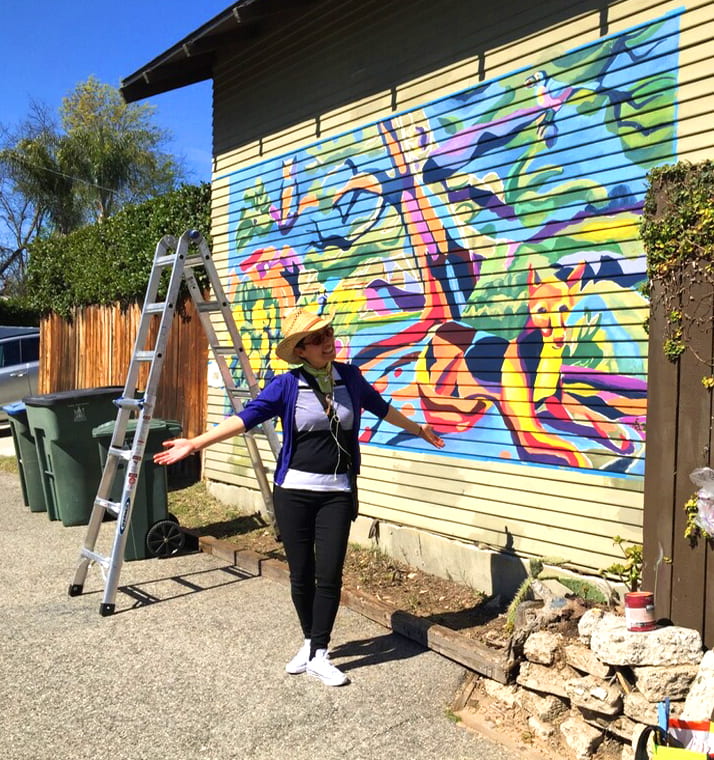
Samuel Semahegn, graduate student, MS mechanical engineering
Graduate student Samuel Semahegn has leveraged the power of Silicon Valley and student research opportunities at SJSU to build a meaningful career in the mechanical engineering industry. In recent months, he has been active in packaging and design for NVIDIA: a prominent company that reinvents computer graphics.
The NVIDIA Scholars program, established by biomedical engineering professor Folarin Erogbogbo, enables students to work with industry professionals while completing their master’s projects, and Semahegn has integrated industry experience into his studies quite successfully. Prior to NVIDIA, Semahegn worked for a Pennsylvania-based company, where he assisted in mechanical design, publication, production and coding.
“Before I went to Philadelphia, I worked in Oakland full-time at a 3D bioprinter corporation. That was my first internship. From July to September 2019, I was assisting with mechanical design for 2D and 3D parts, physical assembly of the bioprinters, electrical assembly, laser cutting, miscellaneous activities,” says Semahegn.
Semahegn spent most of his time in academics and research before entering the industry. Notably, he spent the Spring 2019 semester working with mechanical engineering faculty under an appointment through the Tower Foundation at SJSU.
“I was researching and manufacturing PDMS and other experimental chips that helped me do my project in the labs. I developed a microfluidic system for sensitivity and continuous bacteria detection from aqueous solutions,” Semahegn says. “In some parts of the world, they don’t have clean water, so we are doing research on how we [can] filter contaminated water by using this system. I’m from Ethiopia—that motivates me to do this research.”
Not long ago, in 2018, Semahegn was finishing up his undergraduate career in mechanical engineering at UCLA. There, he co-founded an Eritrean and Ethiopian Student Association (EESA) with the goal of connecting UCLA students to the community while celebrating Eritrean and Ethiopian culture. Semahegn’s history of student support can be traced back to the four years he spent as a certified tutor for physics and upper-level applied mathematics at Fresno City College.
“I love teaching because it provides me with an opportunity to develop communication abilities [to solve] complex physics and math problems,” Semahegn says, adding that tutoring has helped him cultivate greater patience with students. “Now, when I work as a researcher, I can explain why we are doing practical activities in the labs.”

Semahegn (second from the left) and his UCLA team hold a prototype of their robot
Practicality is a common thread running throughout Semahegn’s research, including the undergraduate senior project he completed at UCLA.
“We designed and manufactured a robot that could navigate around obstacles and arrive at a specific location,” Semahegn says. Using a sensor, the robot could detect and collect household items—such as shoes or children’s toys scattered across a room—then organize and transport them to their proper locations. It could even retrieve clean dishes from a dishwasher and put them away. “If the robot sensed any object [in its way], it would stop,” says Semahegn.
Upon graduating from UCLA, Semahegn entered the mechanical engineering graduate program at SJSU. He describes his favorite course, ME 230 – Advanced Mechanical Engineering Analysis with Professor Younes Shabany, as “the hardest class at SJSU.” Yet, he thrived, receiving an A+ grade: a testament to Semahegn’s drive and Professor Shabany’s teaching skill. “I was comfortable with him,” Semahegn says. “The way he teaches, I love it.”
Semahegn is projected to graduate from SJSU in May 2021 with a 3.9 GPA. In March, he’ll begin a new full-time role as an associate test engineer with KLA Corporation until this fall, when he will embark on a new journey as a mechanical engineering PhD student at the University of Arizona at Phoenix. In the meantime, Semahegn plans to enjoy the remainder of his time in California. “Here, [in Silicon Valley], you can see people from different cultures. It’s diversified. That’s why I like it,” Semahegn says.
“I think San José State is the key for anyone who wants to work in industry. Right after my first semester [at SJSU], I got my very first internship in Oakland.” Semahegn urges other students to take advantage of the Career Center, whose resources helped him to land valuable opportunities.
“Handshake is the best resource to get a job. It’s even better than LinkedIn or Indeed because according to my experience, most companies trust you when you apply from the school’s website. SJSU is famous and [companies] like to take San José State students,” says Semahegn, noting that Silicon Valley opportunities are plentiful not just in engineering, but in other realms such as human resources or psychology.
“If anyone wants to work in the industry, San José State is the right place [to be].”
Samuel Semahegn was nominated for a Student Spotlight by bioengineering faculty member Folarin Erogbogbo. Professor Erogbogbo is a strong advocate for students looking to incorporate industry experience into their academic studies.

 “As a Graphic Designer at LA Metro and as a huge proponent of shared mobility and mass transit, I decided to pursue the MTI transportation management master’s degree out of sheer fascination and the urge to be a more integral contributor at work,” Hsu says. “At first, I wondered if I may be out-of-place coming from the arts, but in time, tremendous applicability between the two disciplines of art and transportation emerged.”
“As a Graphic Designer at LA Metro and as a huge proponent of shared mobility and mass transit, I decided to pursue the MTI transportation management master’s degree out of sheer fascination and the urge to be a more integral contributor at work,” Hsu says. “At first, I wondered if I may be out-of-place coming from the arts, but in time, tremendous applicability between the two disciplines of art and transportation emerged.”
